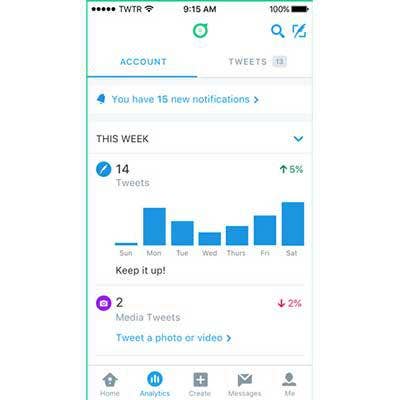The 10 Biggest Cloud Outages Of 2016 (So Far)

Cloud Outages Are Business Outages
Every business is becoming a software business, the maxim goes, which means cloud outages translate to business outages.
As enterprises migrate more mission-critical workloads into production cloud environments, mere minutes of downtime from a provider can significantly impact profits, damage relations with customers, and cause IT administrators to prematurely age.
But while the global economy increasingly hinges on the ability of cloud services providers -- especially those operating at hyper-scale proportions -- to guarantee uptime and maintain service, outages are still common.
The causes can range from power outages to faulty software updates to overloaded servers to database errors. And far too often, we never learn the true nature and scope of the service failure.
Here are some of the cloud outages that have grabbed headlines in the first half of 2016.
(For more on the "coolest" of 2016, check out "CRN's Tech Midyear In Review.")

Verizon, Jan. 14
A power outage at a Verizon data center impacted JetBlue Airways operations on Jan. 14, delaying flights and sending many passengers scrambling to rebook.
Verizon did not say which data center suffered the outage.
New York-based JetBlue wrote in a blog post that the airline experienced network issues because of a Verizon data center power outage that impacted customer support systems, including jetblue.com, mobile apps, a toll-free phone number, and check-in and airport counter/gate systems.

Twitter, Jan. 19
Social messaging giant Twitter experienced global problems on the morning of Jan. 19 after uploading some faulty code.
The internal software update caused Web and mobile apps to go down for an uncharacteristically long period of time, first reported in a tweet before 2 a.m. Pacific. About eight hours later, Twitter confirmed the system was back up and running as it was supposed to.
For many Twitter users, those eight hours felt an eternity.

Microsoft Office 365, Jan. 18
Some Office 365 users were painfully separated from their cloud-based email accounts for many days, starting on Jan. 18.
Microsoft blamed a buggy software update, but its first attempt at a fix didn't hold -- another salvo of email failures riled customers five days after the initial outage was reported.
Problems with the cloud productivity suite's email services persisted for longer than a week in some cases. While not all Office 365 users suffered downtime, those affected had a large number of users, Microsoft confirmed.
Microsoft ultimately reported that its engineers had identified several infrastructure components handling email routing and filtering that became degraded due to heavy resource use. That statement came more than a week after the initial outage.

Microsoft Office 365, Feb. 22
Some Microsoft customers in Europe had a rough time accessing their email from their mobile phones on Feb. 22, or had to endure delays as they tried to log in to Office 365 services through the web portal.
Microsoft blamed the problem -- which affected users intermittently for many hours -- on heavy demand for cloud resources.
A similar, though more widespread, Office 365 outage impacted email and other services across the EU the previous December.

Salesforce, March 3
Some Salesforce customers in Europe had to cope with a CRM disruption for up to 10 hours caused by a storage problem across an instance on that continent.
Even after the storage tier was reconnected, some features still weren't working properly, and the cloud software giant continued reporting degraded performance on its EU2 instance.

Symantec Cloud, April 11
A portal Symantec offers customers to manage their cloud-based security services went down for roughly 24 hours on April 11, starting around 6 a.m. Eastern.
As engineers worked throughout the day to restore and configure a database necessary to bring Symantec.cloud back online, the security vendor's status page mushroomed with apologies to users.
The disruption prevented Symantec clients from administering some email and web security services, but Symantec insisted those layers of protection remained in place, and security itself was never compromised.

Google Cloud Platform, April 11
An outage took down Google Cloud Platform services for 18 minutes on the evening of April 11, affecting Compute Engine instances and VPN service in all its regions.
Google offered affected customers service credits for 10 percent of their monthly Google Compute Engine charges, and 25 percent of their monthly VPN charges.

Salesforce, May 10
A persistent Salesforce.com outage wiped out four hours of data customers entered into their CRMs on May 10 and took days to fully remediate.
While CEO Marc Benioff personally apologized to one customer on Twitter, Salesforce wouldn't comment on how widespread the outage was, or what regions or services were affected by the database failure linked to NA14 -- one of 45 Salesforce cloud instances in North America.
Salesforce's system status webpage said the performance degradation started at 8:41 a.m. Eastern, followed by a "service disruption" less than an hour later, at 9:31 a.m.

Apple, June 2
Apple's cloud experienced a widespread outage on June 2, taking offline some of the tech giant's popular retail and backup services.
The outage started around 12:30 p.m. Pacific, making it impossible for some customers to access multiple iCloud and App Store services.
App Store, Apple TV App Store and Mac App Store, iTunes and Apple's cloud-based photo service all experienced disruptions.

Amazon Web Services, June 4
As storms pummeled Sydney, Australia, on June 4, an Amazon Web Services region in the area lost power, and a number of EC2 instances and EBS volumes hosting critical workloads for name-brand companies subsequently failed.
Websites and online services went down across the Australian AWS availability zone for roughly 10 hours that weekend, disrupting everything from banking services to pizza deliveries.
Affected enterprise customers pointed their fingers at the world's largest cloud provider as it worked to restore service.

Dishonorable Mention -- Pokémon Go, July
Ok, not exactly an enterprise concern, and not even falling in the first half of the year, but given the craze around the game from Google spin-off Niantic, it's fun to mention nonetheless.
Since Pokémon Go's release on July 6, a number of outages have impacted players, sometimes disconnecting them mid monster hunt.
Unprecedented usage, coupled with hackers executing distributed denial-of-service attacks, has delayed release in Europe as the developers try to get a handle on flooded servers.